Personal Branding: We Are All CEOs (Part 2)
/0 Comments/in Brand Profiling & Positioning, Brand Reputation, Brand Strategy, Branding, Personal Branding /by Lorraine CarterIn the second of a two-part post, we take a look at identifying your personal brand and maintaining it…and why personal branding no longer important just for celebrities or VIPs anymore.
To reinforce the message of this article Part 1, we reiterate: Everyone has a personal brand, whether they like it or not. To get the right personal brand so you can;
- Align yourself more effectively with your corporate brand
- Leverage yourself as an industry leader
- Mitigate risk in your business
- Get paid what you deserve!
- Manage your reputation
- Accelerate your career
- Get headhunted
you must map it out, create it to your liking, develop it and then nurture it.
Personal Branding – When the Brand is You
When Does Personal Branding Begin?
Good question. Actually, you’re never too young to begin personal branding. In our example from Part 1 of this article, we introduced Ryan. Ryan is 5 years old, has nearly 8 million subscribers, is the top money maker on YouTube, and is currently attracting more than $1 million per month from advertisers on his channel, Ryan ToysReview.

Image via Ryan’s Toy Review – YouTube
Fair enough, Ryan has built spectacular audience numbers for his personal brand over a two year period. Having said that, it does mean he got started at age 3!
Related: Personal Branding: We Are All CEOs (Part 1)
Some of the biggest YouTube celebrities are super young and successful. If you’re fine with being just a little bit jealous, check out these 13 pint-sized millionaires covered in a 2014 feature in Business Insider.[1]

ZayZay and Jojo, 5 and 7, are huge on YouTube with millions of subscribers and views of their videos
However, personal branding isn’t just about one’s social media presence and a sales channel. So many early life choices about ourselves — our preferences in clothing, grooming, friendship circles, sports, hobbies — are actually branding at work as we mature and learn about ourselves.
In his TEDx talk at the University of California at Berkeley, Tai Tran talks about his personal journey from “zero to infinity.” Born in Vietnam to street vendors, new to the USA at age 6, he explains the why of building a personal brand — that it’s not what you know, it’s who you know by growing your network — and how to achieve your goals.
School Leavers Personal Branding: Your Personal Statement, Your CV, Your Network
In our final year of secondary school, we’re made keenly aware that a whole new world awaits. Whether it’s crafting a personal statement for a university application or writing a CV for employment or volunteerism, we are already putting a stamp on a personal brand.
A network of peers and mentors further defines your personal brand. By the time you’re preparing to leave school, you are expected to have gathered some reliable references who are happy to testify to that unique brand which is you.
Finding the Personal Brand at Your Core
Two popular 20th-century theories, Myers-Briggs and The Colour Code, both related to personality types have been widely embraced by individuals, educational concerns, and employers for several decades. There’s still some relevance in both these last century approaches so these exercises may help you determine your personal brand.
Related: Personality Matters, Bring Your Brand to Life to Grow Your Profits
Introduced in 1962, the Myers-Briggs Type Indicator® identifies and describes 16 distinctive personality types based on preferences posed by 93 questions such as these.[2]
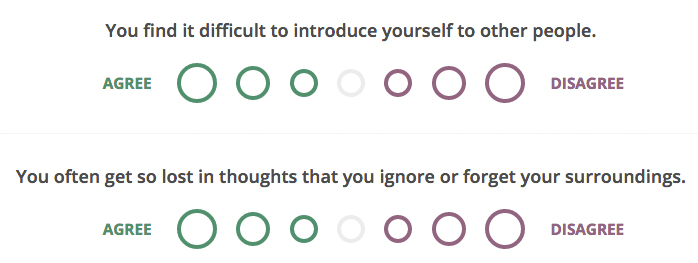
Image via myersbriggs.com
Personality type combinations derive from your tendencies, as follows.
Favourite world: Do you prefer to focus on the outer world or on your own inner world? This is called Extraversion (E) or Introversion (I).
Information: Do you prefer to focus on the basic information you take in or do you prefer to interpret and add meaning? This is called Sensing (S) or Intuition (N).
Decisions: When making decisions, do you prefer to first look at logic and consistency or first look at the people and special circumstances? This is called Thinking (T) or Feeling (F).
Structure: In dealing with the outside world, do you prefer to get things decided or do you prefer to stay open to new information and options? This is called Judging (J) or Perceiving (P).
These possible personality type combinations derive from your gut-reaction answers:[3] When you decide on your preference in each question, you have your own personality type, which can be expressed in four letters.
Back in 1987, Dr. Taylor Hartman created The Colour Code Personality Profile,[4] based on the principle of four key personalities, which he then organised into colour groups for ease of identification.
REDS
Need to look good technically, be right, and be respected. They are strong leaders and love challenges.
BLUES
Need to have integrity and be appreciated. They are focused on quality and creating strong relationships.
WHITES
Need to be accepted and treated with kindness. They are logical, objective, and tolerant of others.
YELLOWS
Need to be noticed and have fun. They love life, social connections, and being positive and spontaneous.
Reds
Reds are motivated by power. They are decisive and assertive. They’re planners. Problem solvers, adventurous and restless, planning for what’s going to be happening in the future. They are also great at solving problems and fixing situations. Reds are natural born leaders.
> Examples: Mark Zuckerberg, Angelina Jolie, Lebron James
Blues
Blues are driven by connecting and building relationships. They can be rather controlling in wishing to ensure everyone else is connected also, creating a potential clash with reds who don’t want to be controlled. Blues are people pleasers who can take critical feedback if it means being a more likable person. Blues are loyal; they remember names, dates and events.
> Examples: Oprah Winfrey, Mel Gibson in “Braveheart,” Forrest Gump character
Whites
People whose core colour is white are driven by peace – they really just want to get along but are often misunderstood. They are logical, passive, accepting, truthful, and tolerant. They may need to be asked for an opinion think and will frequently come up with amazing ideas when prodded a bit. Whites can are happy to work independently and avoid confrontations.
> Examples: John Lennon, Mahatma Gandhi, Dr. Martin Luther King, Jr.
Yellows
Yellows are the fun lovers, optimistic, spontaneous social butterflies. They’re carefree and enjoying the moment. Yellows let baggage go, they can easily erase things and move on. They are very curious people, like to learn new things and ask a lot of questions. Yellow have magnetic charisma.
> Examples: Ellen deGeneres, Will Smith, the Genie in Disney’s “Aladdin”
Dr. Hartman’s theory is supported by a 45-question free quiz, found here, intended to help you identify your personal brand.
Different Types of Offline Personal Brands
Your personal branding begins with your name. Although choosing your birth name wasn’t your decision, so much of your personal brand — how you appear to the world — is completely within your control.
These are a few examples of highly effective “types” you may model yourself on.[5] You may encompass one or more of them…indeed, the rare individual has something from all of these types.
As George Bernard Shaw said, “Life isn’t about finding yourself. Life is about creating yourself.”
- Youthful Excitement: You are daring, spirited, imaginative and up-to-date
- Authenticity: You are honest, genuine and cheerful
- Confident: You are tough, strong, outdoorsy and rugged
- Competence: You are reliable, responsible, dependable and efficient
- Elegant Sophistication: You are worldly, cultured, charming and glamorous
- Unique Persona: You are meticulous, independent, fearless and Persistent
- Zen Master: You are conscientious, observant, intelligent and humble
Different Types of Online Personal Brands
Faced with the prospect of online personal branding, some people protest, “Hey, I’m just a regular person!” No worries, that’s a type of personal brand, too.
Still, others say, “I don’t go online that much.” Neither good nor bad, such a behavioural choice also reflects your personal brand, frankly.
Take a look at these seven basic types of online personal brand[6] to determine where you fit.
1. The Content Creator
You’ve got talent. Whether your platform is YouTube, Instagram, Medium, your own blog or something else, you are known for producing terrific original content.
2. The Curator
Just like a museum curator, you assemble a collection of interesting stuff and share it widely. People follow you because you’ve got your finger on the pulse, even if you’re not the creator.
3. The Journalist
You can analyse and interpret without passing judgement. You’re part content creator and part content curator. You provide fact-based commentary and are a reliable voice; a go-to news source for your market or niche.
4. The Instigator / Critic
You play devil’s advocate and raise questions when other people don’t think to consider an alternative angle. You’re able to spark meaningful debate in your industry.
5. The Case Study
You’re the first to try things, an early adopter. People come to you as a good source to find out what works, what doesn’t, and why because they figure you’ve tested it.
6. The “Regular Person”
You let your personality shine through and it comes across as likable, genuine and authentic, even if you don’t consider your extraordinary in any particular field. Your brand is entirely built off you just being you.
7. The Industry Expert
You know your stuff inside and out. You’re widely considered a true professional in your niche and people turn to you for top notch advice.
Big or Small, Personal Brands Benefit From Care and Attention
Sure, life throws curve balls. But at the end of the day, you are the one responsible for making or breaking your own personal brand. No fabulous trophies or championship prize monies can do that on your behalf.
Related: Brand Sponsorships: The Best Ambassadors Are Already On Your Payroll
Tiger Woods: One of the world’s most successful golfers, a highly paid athlete and brand ambassador, has seen his brand fizzle under his own stewardship.
Related: Brand Crisis – How to Manage, Survive and Thrive
Case Study: Executive Chef Matthew Dolan
Executive Chef Matthew Dolan started working in kitchens as a dishwasher and a fry cook at age 14. In June 2016, his own top-class restaurant, 25 Lusk, was selected to host President Obama for a business leaders dinner in San Francisco.
Although Dolan humbly says, “I am a cook,” there’s a great deal more to it. Watch as Chef Dolan mentors Thunder, a former criminal, as a chef-in-training apprentice, changing the young man’s life in the process. The astute viewer observes that two personal brands are being shaped here.
Maintaining Your Personal Brand
It’s instilled in us from an early age that first impressions count and that we must maintain a good reputation. This applies to both online and offline interactions. Your personal brand is defined by your reputation, including other people’s perceptions of you, in everything you do, everyone you meet, everywhere to go.
If you want some direction mapping our your personal brand then take a look at our brand building programme called the Personality Profile Performer™. This online course takes you through all the key steps you need to consider in building your brand. You can watch a free course preview here.
Alternatively, if you want in-person professional direction and expert consulting support to build your brand and would like to discuss working with us then drop us a line to [email protected] or give us a call T: +353 1 8322724 (GMT hours 9:00-17:00). We’d be delighted to talk with you.
Controlling your personal brand must include awareness of your internet-based reputation. The management of your personal brand includes proper exposure across all internet “real estate.” Your professional website, social media profiles, photos, and published content should all reflect the brand promise you want to deliver.
Related: Brand Promises: How to Craft, Articulate and Live Them for Brand Success
Top 7 Tips for Developing and Maintaining Your Personal Brand
Fundamental to the process is your decision about exactly how you want to manage your social media outlets. Do you prefer to isolate Facebook for purely social reasons and use LinkedIn for your professional life? What about Instagram, Twitter, Snapchat, YouTube and more?
- Photo: Ditch the sunglasses. Don’t use blurry images. Invest in a headshot that’s professional enough for your website and for LinkedIn A more relaxed profile image is appropriate for Facebook and other social media platforms whereas LinkedIn requires a more professional and groomed image — ladies don’t wear off-the-shoulder numbers on LinkedIn because it looks like you’re naked (unless that’s congruent with your personal and professional brand!) Pay attention to cover photo choices as well.
- Profile: Craft an elevator pitch. Make it brief enough for Twitter or for shaking hands in person when you’re asked: “What do you do?” It is intended to support your personal brand and strengthen your brand recognition. Write a succinct and compelling personal biography.
- Position: State your position. Reflect a personal brand philosophy that’s well defined and consistent in every piece of content that appears in connection with your name.
- Website: Build a quality website. It’s one of the first places you’ll be discovered online. Keep it vibrant, up-to-date, interesting and a positive reflection of your personal brand.
- Business cards: Ensure it’s consistent in messaging, language and design style with your other online assets, both social media profiles and website. Offer yours. It goes with a handshake, smile, and a look in the eyes. Even in the digital age, people still use business cards and yours should reflect your personal brand. It’s worth the extra effort and shows considered thought and preparation.
- Privacy: Stay secure. Double check your privacy settings on all platforms. The default may be to share with everyone, including those you are not connected with, and this may not be your preference. Best advice: Don’t post anything you’ll regret, especially as online privacy settings are frequently changing and old posts aren’t easy to cleanse.
- Network: Don’t hide. Make valuable connections. Join groups online and offline that reflect your interests and provide the right opportunities for supporting your personal brand and making connections within your niche.
Related: CEO Brand Leadership: How Vision Drives Brand Growth
Question to consider…
Is your personal brand the best it can be? Ask yourself the following six questions so you can evaluate, identify, develop and maintain your personal brand more effectively:
- If your personal brand isn’t altogether clear to you, how can you make it clear to others?
- How could you benefit from assistance in creating a personal brand?
- Is your personal brand consistent across all platforms, both online and offline?
- Have you set objectives for your personal brand?
- How confident are you that your personal brand will achieve its objectives?
- Does your personal brand need a health check?
[1] http://www.businessinsider.com/these-9-young-youtube-stars-are-all-becoming-household-names-2014-10
[2] http://www.myersbriggs.org/my-mbti-personality-type/mbti-basics
[3] MBTI® Manual: A Guide to the Development and Use of the Myers-Briggs Type Indicator®
[4] https://www.colorcode.com/choose_personality_test
[5] https://www.linkedin.com/pulse/20140602153641-73005678-the-seven-types-of-highly-effective-personal-brands
[6] https://www.inc.com/nicolas-cole/there-are-7-different-personal-brand-archetypes-which-one-are-you.html
Personal Branding: We Are All CEOs (Part 1)
/0 Comments/in Brand Personality, Brand Profiling & Positioning, Personal Branding /by Lorraine CarterIn a two-part post, we take a look at personal branding and why it’s not just for celebrities or VIPs anymore. You can read the second part here
How do others see you in the business arena? What do others think when they hear your name? Your unique personal brand isn’t a collection of past dates, facts, and accomplishments reflected on your CV. It’s your online and offline reputation, it’s how you interact with others, and it’s fundamental to whatever you do every day, whether you’re a student on campus, a globe-trotting CEO, or an office-bound downtown professional.
In short, everyone has a personal brand, whether they like it or not. To get the right personal brand so you can;
- Align yourself more effectively with your corporate brand
- Leverage yourself as an industry leader
- Mitigate risk in your business
- Get paid what you deserve!
- Manage your reputation
- Accelerate your career
- Get headhunted
you must map it out, create it to your liking, develop it and then nurture it.
Tom Peters, co-author of “In Search of Excellence: America’s Best Run Companies,”[1] a landmark business book, provides his thoughts on why we are all CEOs.
Management consultant Tom Peters suggests, “We are CEOSs of our own companies: Me Inc. To be in business today, our most important job is to be head marketer for the brand called You.” – Tom Peters, “The Brand Called You” |
Tom Peters offers tips on building “Brand You” in a series of videos. For his segment on “Brand You: Tell Stories,”[2] watch below.
Related: Brand Stories – 5 Compelling Examples That Sell Themselves (part 1 of 2)
Personal Branding: The Rise of Self
Personal branding is not an overnight task; it requires time and focus upfront as well as ongoing maintenance. Personal branding is not limited to the entrepreneur either — it applies to each and every one of us.
You can be a mini-celebrity within your own industry. CEOs, television presenters, marketing mavens, team sports figures, and popular professors are longstanding examples of individuals who have built personal brands from inside their place of work.
Or, you can create a your own personal brand outside the corporate world.
These days, just about everybody knows someone — if not themselves — who has taken the leap, leaving a more traditional job to turn their side gig passion, talent, or skill into a full-time business. Some are serial entrepreneurs, freelancers, consultants, trainers, writers, artists, musicians, software developers, and yet others are self-employed creatives.
More than 15 million Americans work for themselves and more say they want to.[3] At 15 percent of all workers, self-employment is at an all-time high in Britain, which trails several other European countries, such as Ireland, Portugal, and Italy.[4]
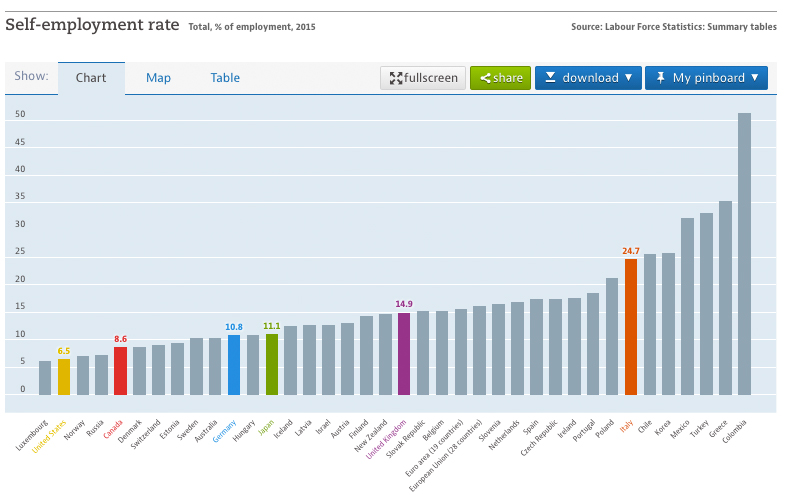
Image: Labour Force Statistics, OECD
As more and more employees step off the corporate ladder for good, the importance of identifying and building a personal brand is paramount. This is exponentially amplified by the internet.
What is Your Personal Brand Profile?
A compelling brand personality that is meaningful and relevant to the people you want to reach is required of an individual in the same way it’s required of a company, product, or service.
Related: Personality Matters, Bring Your Brand to Life to Grow Your Profits
To express your best self in words, try this little exercise from “Personal Branding for Dummies”[5] and watch the Personality Profile Performer™ System video below.
- What three or four keywords describe your essential qualities quickly and clearly?
- What is your essence factor, the core of who you are? “I know I am in my element when __________.”
- What is your authority factor, the knowledge that you hold and the skills that you possess? “People recognize my expertise in _________.”
- What is your superstar factor, the qualities that set you apart? (This factor is how you get things done or what you’re known for.) “People comment on my ability to ___________.”
Foundational principles in branding — brand purpose, positioning, and personality — apply to personal brands as well as to corporate brands, services, and products. Reviewed in context of a personal brand, these core basics are:
Brand Purpose – Defining what you stand for and why you choose to excel in a particular field.
Brand Positioning – Explaining how you stand out from the crowd, your peers and competitors, and how you will execute on that strategy.
Brand Personality – Determining the style and characteristics of how you communicate with others to create an emotional connection.
Related: Personal Branding: The Difference Between Product and Personal Branding
Watch this video from The Onion[6], a news satire media site, to see a spoof about what NEVER happens to those who fail to create a personal brand that stands out.
Related: Personal Branding: We Are All CEOs (Part 2)
Key Steps to Building Your Personal Brand
Map out a branding strategy based on your most important asset: you. Developing a personal brand requires giving thought to your skills, values, passions, and personality. Define how you are unique from your peers and the competition. Identify who you want to reach.
In fact, this exercise is one of the key elements in our brand building programme called the Personality Profile Performer™. As you map out each of your different target audience types — the people you want to be highly visible to, influence and reach — using the ‘Purchaser Personas’ system, the outputs provide the critical insights and direction for how your brand can speak to your primary audience on their terms so they find your message compelling. Winning their hearts and minds on their terms so you can grow your brand and increase your profile. You can watch a free course preview here.

Transform Your Brand – Increase Your Sales with The Personality Profile Performer™ Programme
Now re-evaluate your personal brand. Think about and write down your:
- needs
- core values
- what you stand for – define your purpose
- interests/passions
- vision
- strengths
- weaknesses
- what makes you special – your X factor
- personality
- education / experience
- validation with external feedback (peers, friends)
- positioning statement
- personal brand statement
Alternatively if you want in-person professional direction to build your brand and would like to explore working with us then drop us a line to [email protected] or give us a call T: +353 1 8322724 (GMT hours). We’d be delighted to talk with you.
The Power of Personal Branding
Research shows that when individuals build their personal brands from within an umbrella organization, the business brand(s) to which they’re connected will gain traction as well. Paris-based MSL Group indicates[7] that brand messages:
- Will reach 561 percent more people when shared by employees
- Are shared 24 times more often when distributed by employees
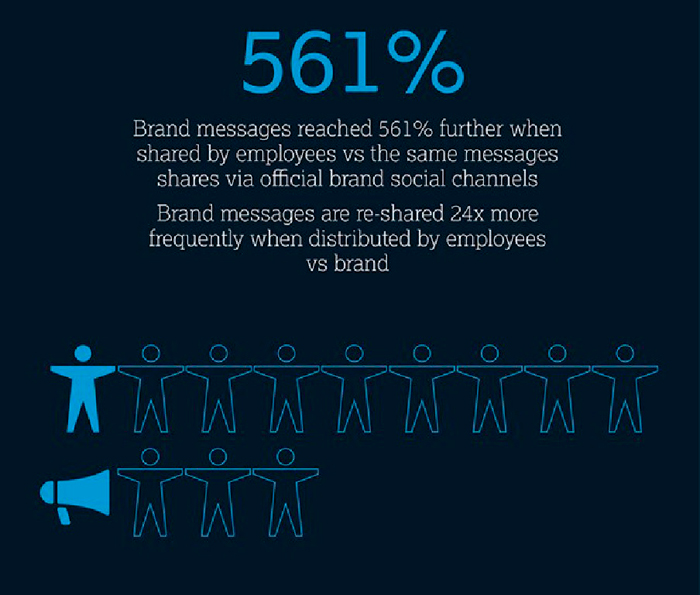
Image: via Scribd, MSL Group
On the entrepreneurial front, Millennial Branding LLC tells YFS Magazine[8], “Your personal brand is transferable from one company to the next and serves as your best protection against business factors you can’t control.”
Top 10 Personal Branding Mistakes to Avoid
Effective personal branding requires dedicated time, proactivity, and professional guidance. Leaving your livelihood to chance or in the hands of others is not an option. Avoid these ten mistakes most frequently made:
- Failing to clarify your purpose
- Tooting your own horn loudly
- Being overly sales-y in any way
- Risking your honesty or authenticity
- Trying to please everyone
- Compromising quality for quantity
- Sloppy networking
- Lack of follow through
- Overlooking your online reputation
- Inconsistencies in what you say, stand for or post online
Related: Personal Branding: We Are All CEOs (Part 2)
4 Personal Branding Case Studies
1. Well-known entrepreneur who created a personal brand
Jamie Oliver started out as a pastry chef who shaped his brand on a healthy school lunch programme. He went on to write one of Britain’s best-selling cookbook, host TV series, endorse Sainsbury’s, multiple food brands and cookware bearing his name, operate restaurants,
win a TedX prize, an MBE, and a place on Britain’s rich list. Watch him tackle the obesity problem in America’s unhealthiest city.
Related: Brand Strategy: 6 Tips for Building Your Profit Growth Plan
2. Relatively unknown, yet a giant in the niche
Ryan is 5 years old. He likes toys. Ryan ToysReview is the world’s #1 YouTube video site. That viewership translates to around $1 million a month in advertising revenue alone.[9]
To read more about how his Mum learned to manage the viral phenomenon of her son’s personal brand, click here.
3. Corporate leader aligned with their personal brand
As Apple CEO, Steve Jobs was one of the most outstanding examples of intertwined and fully aligned personal and corporate branding the world has ever known. With 110% percent of his energy focused on Apple, his signature style on stage and off stage presented as reliably, unwaveringly simple persona, year after year.
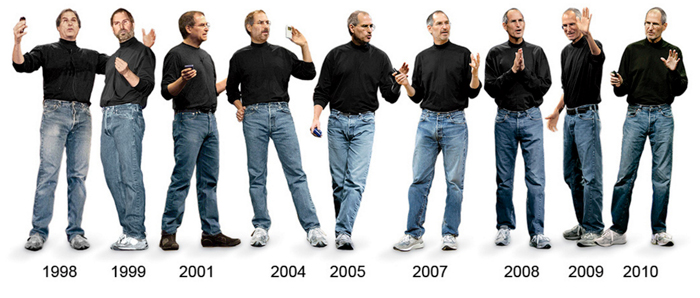
Image via Pinterest
4. SME / SMB personal brand leaders
Laura Madison was selling Toyota cars in Montana so successfully using her own personal brand to promote the business via social media, that she now drives her own brand. Laura surpassed every sales target by promoting herself instead of the car dealership.
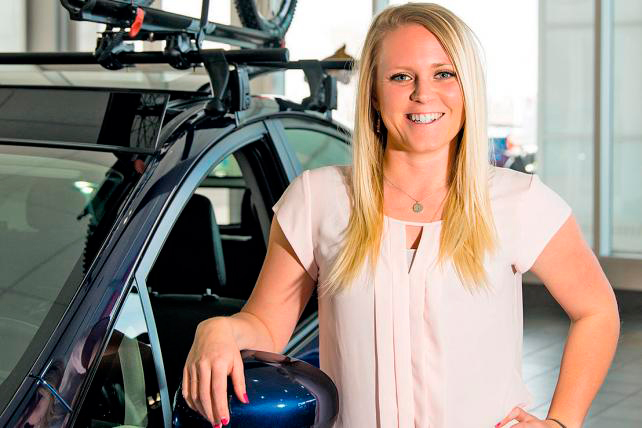
Image via AdAge
Although she saved the company advertising dollars, not every boss would rubber stamp such an approach. However, Laura’s boss says he wished he had 10 more just like her. To find out more about her transition to marketing expert at LauraDrives.com, read her story published in AdAge.
Related: CEO Brand Leadership: How Vision Drives Brand Growth
Ask Yourself These Questions About Your Personal Branding Success
Are you happy with what you find when you Google your own name?
Have you read and acted upon Google’s online reputation advice, seen here?
Have you leveraged all your resources, including networking?
Are you considering a new career direction and, if so, does your online brand presence help or hinder?
How long has it been since you refreshed your personal brand to include a great headshot, elevator pitch and bio?

Build Your Profitable Brand Using The Personality Profile Performer™ Programme with Lorraine Carter
[1] https://www.amazon.com/Search-Excellence-Americas-Best-Run-Companies/dp/0060548789
[2] https://www.youtube.com/watch?v=dH_AqvZJzM0
[3] http://www.pewresearch.org/fact-tank/2016/09/01/8-facts-about-american-workers
[4] https://data.oecd.org/emp/self-employment-rate.htm
[5] http://www.dummies.com/careers/find-a-job/personal-branding/personal-branding-for-dummies-cheat-sheet
[6] http://www.theonion.com/video/company-immediately-calls-job-applicant-upon-seein-31669
[7] https://www.scribd.com/doc/249863818/Infographic-Social-Employee-Advocacy
[8] http://yfsmagazine.com/2012/11/14/expert-reveal-12-personal-branding-tips-for-small-business-owners/3/
[9] https://www.theverge.com/2016/12/22/14031288/ryan-toys-review-biggest-youngest-youtube-star-millions
What Brands Can Learn From Political Campaigns
/0 Comments/in Brand Personality, Brand Profiling & Positioning, Brand Promise, Brand Relevance, Brand Reputation, Brand Story, Brand Strategy, Brand Values, Brand Voice, Branding, Challenger Brands, Disruptor Brands, Personal Branding, Storytelling, Sub-Branding, Sub-Brands /by Lorraine CarterThe races for 10 Downing Street and the White House highlight universal lessons in brand strategy for keen observers. As a brand, there’s none more emotive and powerful than a prime minister or president of the United States.
The time period available in politics for building a party platform, selecting leaders, and creating a campaign is much shorter, and consequently more intense, compared to all other arenas of brand building.
Nonetheless, just like the smallest of brands, the candidates must build that essential emotional bond whether through shaking hands, kissing babies or connecting with consumers at every single touchpoint in a way that’s relevant to them to earn every single vote. As students of brand marketing, the highly focused, condensed time frame and intense process of building a brand to attract voters — similarly to gaining customers — is rich in takeaways for businesses of any size.

US President Barack Obama and Prime Minister Justin Trudeau – (Public Domain)
Brand Vision: Differentiation is Everything in Brand Strategy
How many times have you heard someone say, “I’m not voting…all politicians are the same.” Political campaigns remind us that clear brand differentiation is key if you are to capture your audience’s attention, imagination and support. In politics that vision is policy; in branding that vision can be whatever you choose…as long as it’s undeniably clear, relevant to your primary audience and expressed in easy to understand language that resonates with them.

Image via hillaryclinton.com
Explain your brand vision. Paint a picture of what the world could look like and how others can be part of that when they buy into the vision of your brand. This must be a really bright North Star that shines for your audience and attracts word-of-mouth referral time after time.
Listen as US President Franklin Delano Roosevelt delineates four essential human freedoms. FDR’s “Four Freedoms” speech leaves no question regarding the nation’s vision, “attainable in our own time and generation,” on the eve of US involvement in World War II.
Listen as John F. Kennedy takes just 30 seconds to articulate his vision in the 1961 inaugural address, speaking first to Americans and then to fellow citizens of the world.
Healthy Brand Competition
In sales training, we’re taught to emphasize benefits; trashing the competition is not the right approach. Some politicians are known to be terrible at this. Instead of articulating an optimistic vision, candidates often tell you how lousy the incumbent and/or the competition is. Arguably some consider Donald Trump to be the champion of insults — a skill he developed on reality television and honed in debates — which doesn’t always translate so well in real life.
To get out the vote, that political position must be communicated across all stakeholders: volunteer voter registration workers, doorbell ringers, call centres, college campus activists, hundreds of regional election headquarters, social media gurus, data experts, staffers, media and the public. To gain customers, that brand message must be reflected at every touchpoint and resonate with current buyers, prospective buyers, suppliers, vendors, distributors, every employee, shareholders, investors, and the CEO.
In the absence of articulating and sharing a compelling brand message, disinterest develops, or even cynicism and mistrust. In politics, this translates into divisiveness, fear, insecurity — and a landslide for the opposition. For a brand, it means that reputation suffers and sales decline.
You Are Your Brand
The brand called YOU is a multi-layered lesson we can learn (both good and bad practices) by watching the political stage during an election cycle. Certainly, public opinion can be influenced by the packaging: takeaways like Hillary Clinton’s pantsuits and Donald Trump’s unique hairstyle make an indelible mark, as with any brand.

Meryl Streep as Donald Trump – (@simply_the_best_ms on Instagram)
Also, brand marketers can observe how politicians use tone of voice, choice of words, truthfulness, authenticity, facts, listening skills, presentation style, distribution channels, frequency, inspirational metaphors, storytelling, consistency or lack of it, and more to make connections and grow audience. On occasion, they provide examples of what NOT to do.
Everyone involved has a chance to be a brand that is worthy of notice via its most important asset: People. Motivated, enthusiastic, hard working, smiling, clever and talented people make all the difference.
Know Your Brand’s Target Audience
Skills and insight go into knowing and understanding your target audience so you can speak their language, tap into their attitudes and values, and build a simple, strong compelling message that they find irresistible. That magnetism factor is a really important part of successful brand building. It’s one of the critical tools used for mapping out your different customer types in what we call Purchaser Personas.
In fact it’s one of the key elements in our brand building programme called the Personality Profile Performer™. You can’t attract the attention of your ideal audience and sustain their interest if you don’t know them intimately — their needs, wants, loves, hates and aspirations. Every business has a minimum of two and up to twenty different customer Purchaser Personas which provide the critical insights and direction for how your brand can speak to your customers — winning their hearts and minds on their terms — so you can grow your business.
The mechanisms of polling, precincts and predicting are complicated. We leave that to the experts. Nonetheless, you’ll hear news commentary about politicians of all political persuasions “appealing to their base” and/or “broadening the base.”
As in branding, the articulation of mission, values, and promise are essential. Communication with target audiences to understand their likes and dislikes is the first step, however talking to the base over and over doesn’t bring in a single new vote. Brand expansion while maintaining brand loyalty with a core audience is the name of the game in politics as in retailing and other customer verticals.
Brand Messaging Cannot be Overrated
The importance of driving powerful brand impact is what Donald Trump might call “H-U-U-U-G-E” because connecting at a deep emotional level moves people strategically and emotionally. The intensity of the brand message is what makes it stand out; the authenticity of the brand message is what makes it stick.
How you communicate with your audience and what message you bring is what keeps audiences loyal and strengthens bonds. As with any branding strategy, placement, delivery, frequency and tone of voice matter. It’s so easy to turn people off with too much noise and overexposure.
In America, where the election process rolls out over two years and intensifies as election day draws nearer, this skill must be managed and sustained over weeks and months, just like a brand must do in the broader marketplace.

Image via donaldjtrump.com
Brand Storytelling Matters
It is critical to stay true to your brand’s DNA and not get lost, unglued, or disconnected. We’re conditioned that way. When a child asks you to read their favourite bedtime story, they’re anticipating the same story with the same ending.
Politicians are famous for the brand disaster known as a flip-flop on issues, and it can cost an election or tank sales. Whether in the political arena or in branding, there’s simply no room for inconsistent storytelling. It kills believability and trust.
The big why behind the brand story challenges us to build stories that promote something for the greater good. With vision, we can create and communicate a loveable brand, or a sustainable brand, or a socially responsible brand, or a caring, charitable brand…just like building a personality that people will vote for.
Sub-Branding Opportunities and Risks
Sometimes brands create sub-brands to serve expansion goals, as in Coors and Coors Light or American Express and the American Express Gold and Platinum Card. The risk is that sub-brands can detract from core brands, using precious time, energy and resources. Secondly, the sub-brand reputation reflects on its parent brand; the overall customer message can become diluted or compromised.
To minimise or eliminate risks, we recommend taking professional branding advice if you’re considering sub-branding to avoid costly mistakes. Planning your brand structures in the form of new or additional related or unrelated products or services, also known as brand architecture, is a critical part of the strategic planning and brand building process. We’ve seen this play out recently on the political world stage. Brand expansion must be taken seriously to protect core brand values. However, adding Alaska Governor Sarah Palin to John McCain’s 2008 ticket diluted the brand.
When Hillary Clinton undertook a six-month vice presidential vetting process, the selection was received quite differently to when Britain’s new Prime Minister Theresa May selected dropout candidate Boris Johnson as foreign secretary in an overnight surprise. The former London mayor’s brand image is reportedly lacking in the required decorum associated with such an important role according to other world leaders.
“My chances of being PM are about as good as the chances of finding Elvis on Mars, or my being reincarnated as an olive.” – Boris Johnson [1]
The Appeal of Disruptor Brands
What did brand managers learn from Bernie Sanders during the 14-month lead up to the Democratic Convention, when the challenger was the Millennials’ poster boy, a lovable white-haired grandfather, small-town Vermont Senator?
- It takes time and resources — generally a year or so — for any challenger brand to successfully disrupt.
- A clearly and passionately articulated brand vision should be communicated over and over again.
- This candidate’s storytelling remained on message (since his youth), establishing strong authenticity, trust and delivering no surprises.
- Bernie Sanders successfully reached a broad audience through brand activation and personal engagement. While pre-imposed deadlines brought his campaign to an end, the branding strategy was successful.
- Watch what happens when a little bird lands on Bernie Sanders’ podium during a speech. The crowd goes crazy and the candidate turns the moment into an articulation of his vision, “No more wars.”
Consider these questions:
- Is your brand vision well developed and clearly communicated?
- Have you shared your brand vision with all stakeholders?
- Is your brand failing to connect and perhaps in need of a rebrand or brand refresh?
- Do you and your employees passionately personify your brand?
- Is your brand story clearly articulated across multiple customer touchpoints?
- Are you considering sub-branding as a strategy for brand expansion?
- Are you a brand challenger with a clear point of differentiation?
[1] http://www.telegraph.co.uk/news/politics/london-mayor-election/mayor-of-london/10909094/Boris-Johnsons-top-50-quotes.html
Personal Branding: Tips for CEOs & Senior Executives
/2 Comments/in Brand Personality, Brand Profiling & Positioning, Brand Promise, Brand Reputation, Brand Strategy, Brand Values, Branding, Business, Personal Branding /by Lorraine CarterBranding is essential for the success of your business, but your products or services aren’t the only aspects of your company that need a strong brand. As a CEO or executive, and the public face of your business, developing a distinctive and consistent personal brand complements and further solidifies your business brand—while at the same time helping you achieve personal development, growth and enhanced career success.
Personal branding is a natural extension of your leadership. Your personal brand encompasses your expertise, your career accomplishments, and your professional reputation. In large part, it is the emotional response your customers have when they hear your name—it is the experience of ‘you’.
As a CEO or executive, you don’t have to be Sir Richard Branson or Jeff Bezos to enjoy the benefits of a well-developed personal brand. The following four tips will help you create a consistent personal brand that will help elevate your professional reputation and drive brand effectiveness for your business.
Top 4 Personal Branding Tips for CEOs and Senior Executives
1. Understand Your Existing Personal Brand
Whether or not you’ve worked to develop it, you already have a personal brand. The problem is that it may not be the brand you want.
Your personal brand is defined by your reputation, and by other people’s perceptions of you. This is especially critical in today’s digital world, where trusting online information and resources is the rule rather than the exception. What kind of picture does a Google search for your name paint?
Controlling your personal brand begins with awareness of the reputation that’s already out there. Your professional website, social media profiles, and published content should all reflect the brand promise you want to deliver to your customers. Without active participation in shaping your personal brand, it will be created for you—and you may not be pleased with the results.
Some of the most crucial ingredients for managing your personal brand online include:
- A professional photo: Maintain personal brand consistency with one high quality, professional headshot that’s used for all of your online platforms, from your website to Linkedin to Facebook to Google Authorship etc. Having a great photo not only encourages brand recognition and visibility, but also helps to create personal connections with your customers.
- A unified profile: As with your photo, use a single, succinct and compelling personal bio for every aspect of your online presence that encapsulates your personal brand and strengthens brand recognition.
- A defined and consistent brand position: Make sure your personal brand philosophy is reflected in every piece of content that appears under your name online. Conflicting or incongruent presentations can undermine or dilute your brand and raise doubt in the minds of your audience about your integrity.
2. Define Your Niche
You may know how to define a niche for your products or services, but what about your personal brand? You can’t identify a target audience, because your customers aren’t buying you—or are they?
The goal of personal branding is to sell your audience on ‘you’ as a professional, an expert, and a business leader. This means you do have a target market, and it includes your business customers as well as your colleagues, strategic partners, stakeholders and the thought leaders in your industry. So defining your personal brand niche means deciding who your ideal audience is, and determining how you can best connect with them on a personal level.
3. Elevate Your Personal Brand By Association
As the saying goes, you are known by the company you keep. This holds true for personal branding, where a few strategic endorsements from industry influencers can enhance your personal reputation and allow you to be perceived as successful by association with known name brands.

Image via www.timferriss.com
Tim Ferriss, entrepreneur and New York Times bestselling author of The 4-Hour Work Week, has seen phenomenal success as a personal brand, bolstered by multiple endorsements from highly recognizable names. The bio page of Ferriss’ website places him in the company of big business and personal brands, from working with Google, Harvard, and Nike, to appearances in Forbes and on CNN, to receiving mentions in the class of Richard Branson and Jack Dorsey.
As a CEO or executive, networking with influencers in your industry and gathering testimonials is a powerful way to build your personal brand and draw on the success of association.
4. Own Your Brand
Even in an impersonal medium like video or the Internet, your audience can tell when you’re being authentic—and they can spot a phoney. Your personal brand will not be successful if it’s not authentic. In fact, authenticity forms the foundation of a unique personal brand that helps you stand out. As writer and poet Oscar Wilde (who was a strong personal brand before the term was defined) said: “Be yourself; everyone else is already taken.”
Many CEOs and executives fear the possibility of polarizing their audiences with a strong, authentic brand. But it’s essential to realize that, like your business brand, your personal brand won’t appeal to everyone—and it doesn’t have to.

Image via www.apple.com
Take, for example, Steve Jobs. The former CEO of Apple was unquestionably a powerful personal brand. Innovative, dynamic, and widely respected, Jobs was also known for his strict perfectionist tendencies and for being harsh on his employees. He never tried to hide these qualities or apologize for them, yet even after his death, Jobs remains a beloved icon and a symbol of technological innovation.
Jobs’ less desirable personality traits remained a known but low-key quantity throughout his life and career. But even more polarizing personal brands can be successful, whether at the positive or negative end of the spectrum. Consider the unprecedented success of UK entrepreneur and celebrity chef Gordon James Ramsay, Jr, OBE. Abrasive, brusque, and demanding, Ramsay has built his personal brand on unending criticism delivered in crude language that has actually reduced his guests—his customers—to tears on occasion.

Image via www.gordonramsay.com
Still, Ramsay’s audience can’t get enough. The reason is that despite his caustic demeanor, Ramsay is absolutely authentic. He has a genuine interest in, and a passion for, helping others succeed, and that passion shines through. And while he may seem to work at cross-purposes, at its core, Ramsay’s Kitchen Nightmares aims to create more successful restaurateurs through the application of Ramsay’s demonstrated expertise.
Defining, shaping, and promoting your personal brand as a CEO or executive requires concentrated effort and some brand strategy inputs, but the results are worth the challenge. By maintaining a powerful and consistent personal brand that is distinct from, yet complementary to, your business brand, you can engage your customers and strengthen your platform for ongoing success.
What do you think?
• Are you aware of your existing personal brand? Is it positive, negative, or neutral?
• How can you monitor and shape your personal brand online?
• What niche audience does your personal brand appeal to, and how will you reach them and engage them positively?
• Where would you start looking for influencer endorsements in your industry?
• How can you define and enhance your authentic personal brand?
Feel free to share your thoughts in the comments. We’d love to hear from you!
Personal Branding: The Difference Between Product and Personal Branding
/0 Comments/in Brand Personality, Brand Reputation, Brand Story, Brand Strategy, Brand Values, Branding, Personal Branding /by Lorraine CarterBranding is crucial for any business looking to be competitive in today’s marketplace. When most organizations mention branding, they’re referring to the carefully crafted perceptions surrounding their products or services designed to create an emotional response in their target audience. But there’s another type of branding that can be equally important in marketing your business—namely, your personal brand.
Whether you’re an entrepreneur or business owner, a professional or an executive, a spokesperson, marketing associate or CEO, drawing a distinction between your product and personal brands, and working to position each of them, can help you propel your business forward and increase public recognition, customer loyalty, and profitability.
What is a Product Brand?
Defining a product or service related brand is paradoxically simple, yet also quite complex. A brand is what your product or service ‘stands for in people’s minds, what it means to them,’ and ‘branding is the process of executing and managing things that make people feel the way they do about your brand’. What your brand stands for—its values, promise, customer experience, and those associated feelings your brand provokes through its story, and so forth—is what makes up a product or service brand. It’s a combination of all those intangible and tangible elements associated with your products, services, or the organization as a whole that gives your brand meaning in a way that’s relevant to your target customers.
Companies endeavor to suggest and influence customer perceptions and predispositions to buy through their branding strategies—and this is where the definition becomes more complex. Defining a product brand on the company side can involve a number of components, all working together to reinforce a desired brand perception. This can include brand positioning, brand values, the brand story, and the brand promise.
A product or service brand shapes customer perceptions of the things they purchase, everything from eggs to airline travel! These types of brands can become so powerful that they’re perceived as synonymous with the function of the product or service provided. For example, many people refer to all disposable tissues as Kleenex, all copy machines as Xerox, or all clear adhesive tape as Scotch tape or Sellotape.
What is a Personal Brand?
Your personal brand is all about you, as a person, but in the more public sense of how you project your image to the outside world. A personal brand doesn’t necessarily reflect every detail of an individual’s private life, unless an individual chooses to live their life in a ‘reality TV’ way! Just as with product or service brands, personal brands are (or should be) carefully crafted in terms of both perception and authenticity. In a very fundamental sense, your personal brand is your reputation.
A personal brand includes the perceptions, qualities, and characteristics people associate with you, your name, how you conduct yourself (professionally and privately) and your professional position. Personal brands can be leveraged in brand strategy terms just as effectively as product or service bands. They too represent the emotional experience others will expect when encountering you in a professional capacity. Your personal brand is a unique promise of value that can be attributed to you as an individual, which can also tie in to your company’s brand promise on some level as well.

Image via www.virgin.com
Take Sir Richard Branson and Virgin or Michael O’Leary and Ryanair. Both have very separate, individual personal brands that are distinct from the product or service brands they head up. They are, in effect, the spokespersons and visionaries behind the product brands, with brand personas which are aligned to the brands they stand beside—but neither are one and the same.

Image via www.02b.com
The most successful personal brands are an authentic reflection of that person’s true qualities, without necessarily divulging every micro detail on a private level in their personal lives.

Image via www.marthastewart.com
One strong example of a successful personal brand is Martha Stewart. In this instance, her personal brand is tightly linked to her products and services, which typically also carry her name. The public face of a vast business empire, Martha Stewart the person is also Martha Stewart the brand. Customers associate her as an individual with taste, quality, and comfortable living. Interestingly Martha Stewart’s personal brand was strong enough to carry her through a legal ordeal that had her serving time in prison—after her release, her reputation recovered and her business empire continued to grow.
Product and Personal Brands: What They Share, What’s Different
While personal and product brands are different, they are not totally separate either. Regardless of your personal brand’s standing in the market in terms of its recognition and associations, the strongest personal brands are often linked in some way to your company’s product or service brand. There are often commonalities—for example, Martha Stewart’s personal style is reflected by the brand promise of her company to lend that style to customers’ home décor, clothing, and other Martha Stewart Living product lines. Richard Branson’s personal brand is reflected in some of the characteristics of the Virgin brand, such as being seen as a game-changer, a challenger of the status quo, and an innovative risk-taker that puts the customer at the heart of everything.

Image via www.marthastewart.com
Generally, product and personal brands are similar in that they stand for something that’s meaningful to their audience, and must be consistent in how they are reflected or presented to the world. Consistency is an important key for both personal and product branding. The more customers experience the same values and emotions through each interaction with you, or your products and services, the more they will trust, expect and value a similar relevant experience every time.
There are several differences between product and personal brands, and the most important is one that’s inherent to the nature of what these brands represent. Product or service brands are created by branding and marketing campaigns, which help to shape customer perceptions. On the other hand, personal brands are a deliberate choice by the person who is that brand.

Image via www.starbucks.com
A cup of Starbucks coffee can’t choose to be a social status symbol, representative of discerning cultural tastes and community responsibility. But Howard Schultz, the CEO of Starbucks, can choose to launch an initiative to create more jobs and encourage entrepreneurs, and kick-start that initiative with a $5 million donation.
Establishing Your Own Personal Brand
One vital realisation in personal branding is that, no matter who you are or how you comport yourself professionally, you already have a personal brand. If you’re known to people in a professional capacity, you have a reputation and a set of expectations that surrounds your involvement—good or bad. And you can allow others to continue establishing your personal brand according to their own perceptions, or you can take control to actively shape, promote, and grow the personal brand you want to project.
Sir Richard Branson, founder and CEO of Virgin Group, takes an active role in shaping his personal brand. Branson is widely perceived as pioneering and inventive, which has led to the formation of an array of diverse, yet wildly successful industry groups—from Virgin Records to Virgin Mobile, Virgin Airways, and Virgin Trains. Branson’s business pursuits are continually evolving, and they continue to succeed based on the strength of his personal brand as much as the aggressive effectiveness of his business decisions and the perceived value of the Virgin brand itself.
Building a personal brand involves first defining the perceptions of yourself that you want others to expect, and then remaining consistent in your presentation of those perceptions throughout your professional appearances, both online and in person. Creating central pieces, such as your biography and professional photo, and using them to identify yourself consistently wherever you appear online or in more traditional media are important tools to manage and reinforce your personal brand.
In general, your personal brand won’t require as much research, campaigning, and analysis as your product or service brand—but the effort to shape and maintain personal branding can be highly effective in supporting the growth and success of your product or service brand or indeed your career!
What do you think?
• Is a personal brand important to you as a professional?
• Have you developed a strongly established personal brand? When did you last audit how others perceive your unique personal brand?
• How can you tie your personal brand to your product or service brand and maintain authenticity to yourself?
• What opportunities can you identify to showcase your personal brand?
• Will your personal brand evolve separately from, or in tandem with, your product or service brand?
Feel free to share your thoughts in the comments. We’d love to hear from you!
About
Persona Branding & Design Consultants
Contact: Lorraine Carter
T: +353 1 832 2724
Carra House
Howth, Co. Dublin, Ireland
Copyright © 2007-2022 All rights reserved.
Persona Design Consultants Ltd.
Registered in Ireland: No. 201997
Member of





